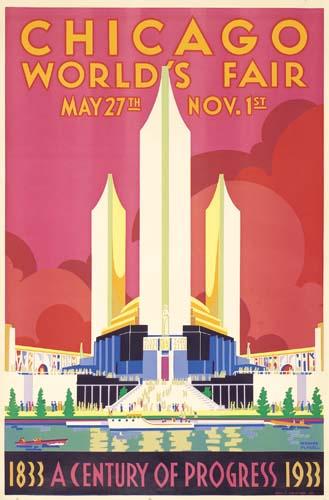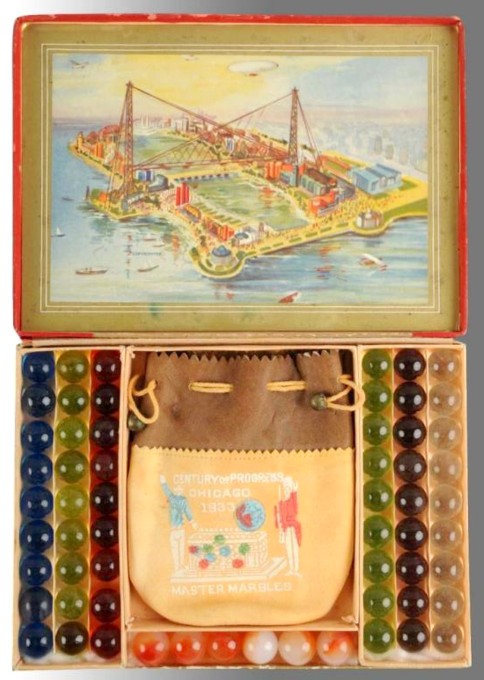A Century of Progress Souvenirs and Collectibles
The 1933 World’s Fair in Chicago celebrated science, made a profit, and set the style for the 1939 Fair in New York. This fair, themed “A Century of Progress” offers the collector a wealth of souvenirs and collectibles.
Despite the great Depression, civic leaders in Chicago, Illinois were busy planning for Chicago’s second world’s fair in 1933 to celebrate the city’s centennial. Though commemorating a historical event, the fair committee decided against the sort of historical theme that had proven to be unpopular and unsuccessful in the 1876 Philadelphia Centennial Exhibition. They decided instead to focus on the progress that had been made in science and industry and “A Century of Progress” became the theme of the fair.
Chicago’s Century of Progress World’s Fair Celebrates Science
Chicago’s 1933-34 exposition focused on developments and innovations in science, and to that end, the fair committee enlisted the support of The National Research Council, an organization of scientists that had been formed in 1916 to advise on war technology. For the first time, lighting played a major artistic role as companies like Westinghouse and General Electric vied to outdo each other in creating modern and exciting artistic effects with the latest lighting technology and materials.
The Art Deco World’s Fair in Chicago
As the country was mired in the Great Depression, early Art Deco was the logical economic choice for the overall architectural style of the fair. The concrete structures were cheap to build, and eye catching effects could be created inexpensively through the use of bold color and innovative lighting. Like the White City of the Columbia Exposition of 1893, the buildings were unified through the use of the limited color palette used throughout that was developed by Joseph Urban, a well-known designer of stage sets.
Chicago Fair Exhibits and Entertainments
In keeping with the Century of Progress theme, the Hall of Science was the largest and most important exhibit building of the fair. Applied science exhibits were presented in the manufacturers’ hall, where visitors saw an early form of television and a working auto assembly line. As always, dinosaurs were well represented, as the public still found them fascinating. It wasn’t all prehistoric beasts and technology, however. Sally Rand, a famous vaudevillian, danced naked with two large ostrich fans in a Parisian styled dance hall on the Midway. At its close in 1934, the fair had played host to 48 million visitors, and made a profit of $160,000.
1933 Chicago World’s Fair Collectibles
Unlike the New York Fairs, with the Unisphere and the Trylon & Perisphere, this one had no single graphic identity that symbolized the fair, although a planet with a swooshing tail does appear on many collectibles. Prices for souvenirs from this fair are lower than the more well known Columbia Exposition and the two New York fairs. A base metal trinket box with embossed renderings of various fair buildings and exhibits was purchased on eBay for $16. Postcards bring $1-2, and an enamel compact will fetch $50-60. The highest priced fair collectibles are items having to do with day to day operations, such as season ticket holder IDs, employee IDs and similar items.
Reference: Robert Rydell & John Findling; Fair America: World’s Fairs in the United States.
-Article by p4A contributing editor Susan Cramer.






No comments
Comments feed for this article
Trackback link: https://www.prices4antiques.com/blog/chicago-worlds-fair-1933-1934-collectibles/trackback/